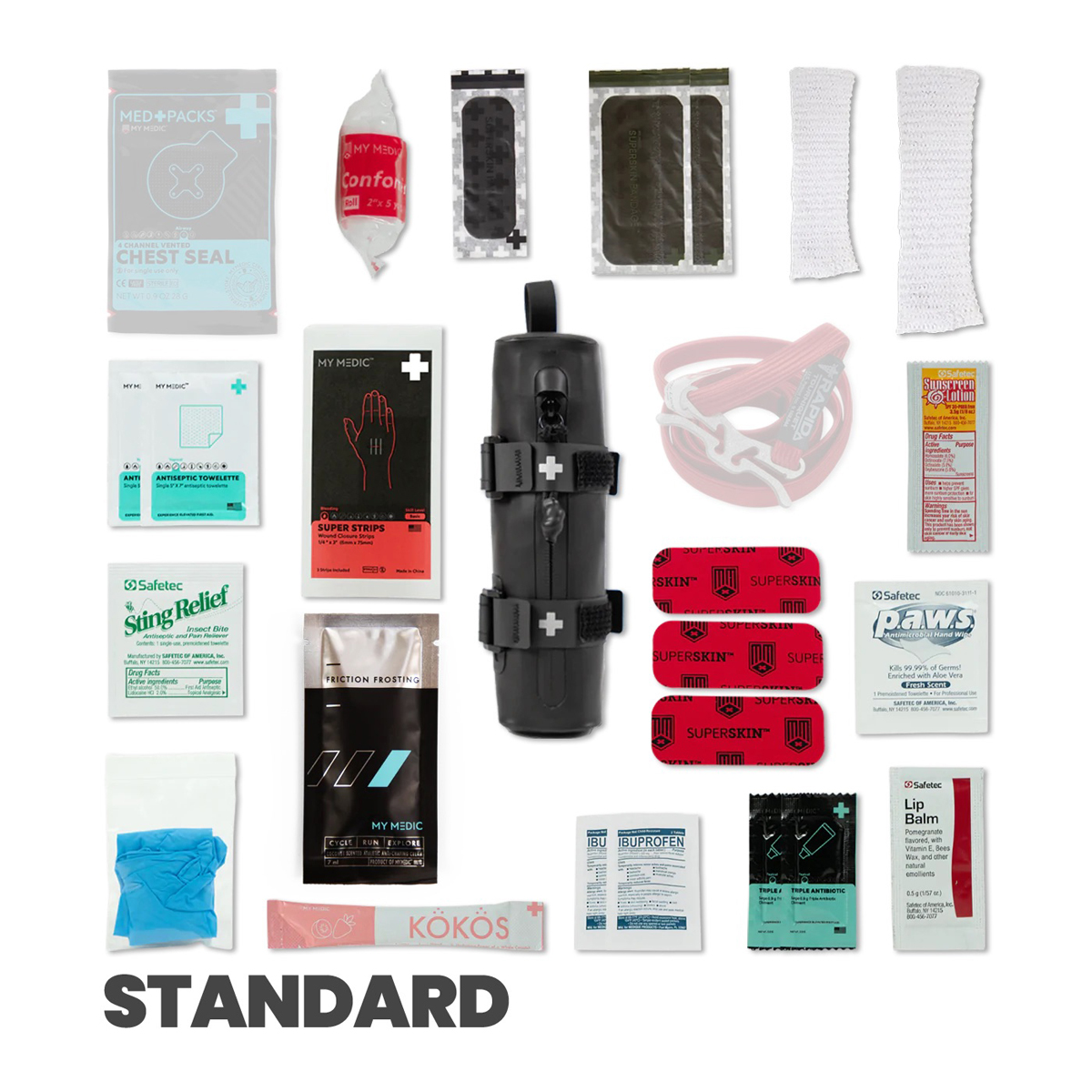By Erica Tingey — Mountain biking can take us to some of the most beautiful places on the planet, including alpine lakes, lush forests, and scenic deserts. While mountain biking is an inherently risky sport (especially if you venture into the backcountry), there are many ways to significantly lower your chances of serious injuries, including knowing wilderness first-aid. The best tools you can bring when you hit the dirt are education and preparation. I recommend carrying a few items to help treat minor scrape-ups, decrease pain, and/or stabilize more serious injuries until you can get to a hospital or help arrives.
Mountain Bike First-aid Kit Components
The contents of your first-aid kit will depend on the duration and technical difficulty of your ride. If you plan to be in remote backcountry areas for an extended period, you’ll likely want to bring more than you would for a quick, heavily trafficked trail. The following are items to consider:
- Wound-care items such as bandages of varying sizes (including a few larger sizes), non-stick gauze, alcohol prep pads, and antibacterial ointment. Cleaning and covering wounds promptly can help prevent infections and wound exacerbation.
- Topical and oral allergy treatments such as Benadryl
- SAM splint (make sure to learn how to use one!) This is a compact, lightweight, highly versatile device designed for immobilizing bone and soft tissue injuries in emergency settings. It consists of strips of soft aluminum, with a polyethylene closed-cell foam coating.
- Triangle bandages can be used to help with bleeding, as a sling, as a tourniquet, or to stabilize splints.
- Elastic wraps can secure wound dressings or splints, as well as provide compression for sprains and strains.
- Safety pins can help secure bandages or a torn backpack
- Painkillers such as ibuprofen or acetaminophen can help manage sprains and lacerations
- Medications such as insulin, inhalers, and EpiPens can be critical
- Athletic tape or duct tape can help secure dressings, provide compression for strains, or cover blisters
- Zip ties or gear straps can help secure splints or dressings, damaged gear, or assemble an emergency shelter
- Scissors
- Israeli bandages can help control heavy bleeding
- Tourniquets (or Billy Bands) can help control arterial bleeding, but you must have proper training before using these.

There are many pre-assembled first-aid kits available; however, be familiar with their contents and tailor them to fit your needs.
Communication Devices
Some injuries will prevent you or a partner from finishing the ride. One of the most helpful items you can carry is a way to call for help. If you’re traveling to remote areas where you won’t have cell phone service, consider bringing a satellite communicator so that you can contact family or emergency services.
Take a course
First-aid kits are only as useful as their users. Anybody who spends time in the wilderness will benefit from a wilderness first aid course, better yet, get certified as a Wilderness First Responder. Taking these courses will help prepare you to deal with things like injuries, hypothermia, dehydration, altitude sickness, allergic reactions, sprains, and heatstroke until you or your partner can get medical help.
Prevention is the best medicine.
Before every ride, check your bike for safety issues. Make sure you bring adequate fuel and hydration, stretch, and warm-up. Gradually increase the mileage and technical difficulty of your rides. In-person coaching will help you master body stance, visualization techniques, and weight-shift timing that will best help mitigate risks when cornering, jumping, dropping, or tackling gnarly rock gardens. Remember to check weather reports and bring appropriate layers. Always wear a modern, mountain bike specific, well-fitting helmet!










